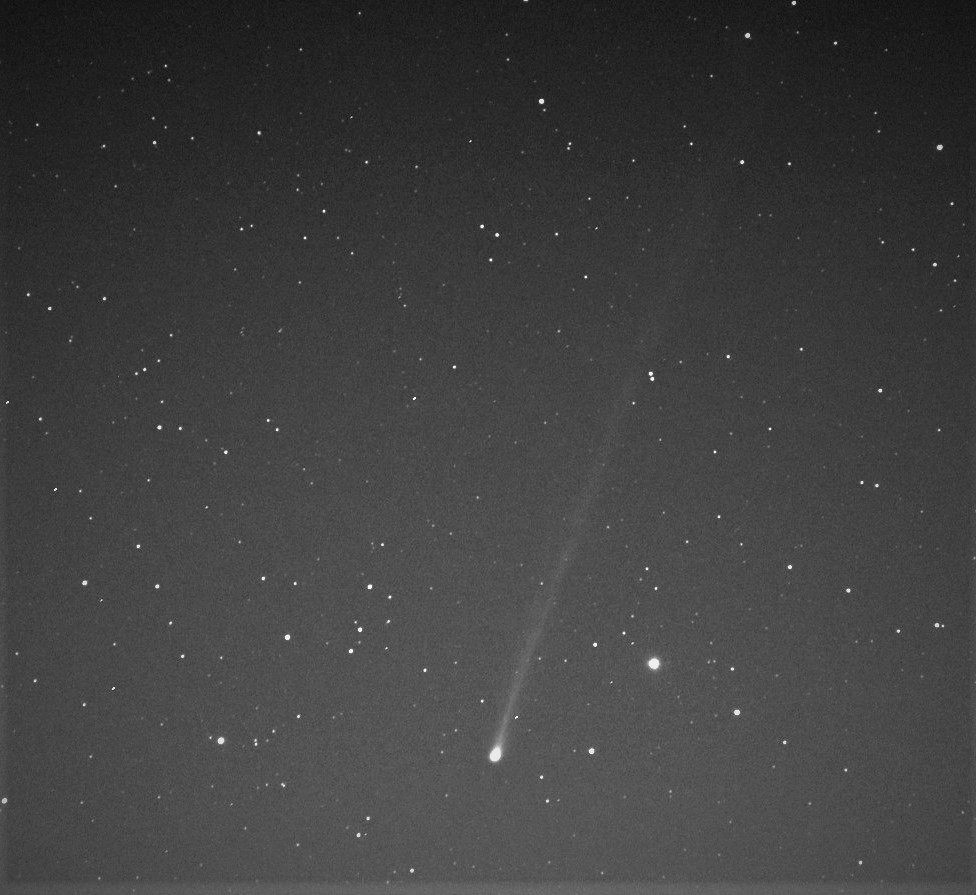The IKBFU Astronomical Society, in collaboration with the World Ocean Museum, has successfully captured a series of photographs of the comet C/2023 P1, which has been named after its discoverer, Japanese amateur astronomer Hideo Nishimura. The comet was first observed on August 12th and was approximately 1.5 AU away from the Sun at that time.
|
Head of the Astronomical Society, Alexey Baigashov: |
|
The comet is rapidly brightening as it dives toward the Sun. Under optimal conditions, it can already be seen above the horizon in the northeast just before dawn with the help of binoculars. On September 12th, it will reach its closest point to Earth and will pass perihelion on September 17th. At that point, the comet will reach a maximum brightness of about 3.1m, but unfortunately, it will not be visible against the Sun. |

As the comet approached the Sun, astronomers calculated its orbit.
According to Alexey Baigashov, the orbit of the comet is highly elongated, like many other long-period comets. Its orbital period is estimated to be 434 years, and it has an impressive speed of 87 km/s, which is ten times faster than the speed of artificial satellites in Earth's orbit.
The physical characteristics of the comet are still unclear, but astronomers have speculated that it may be related to the Sigma Hydrids meteor shower that occurs in early December. The information is still being verified, and the researchers hope to determine further details about the comet as it moves away from the Sun after September 17th.
The IKBFU Astronomical Society would like to thank Lyudmila Gimbitskaya for her assistance.
User profile for student
User profile for student
I give consent to the processing of the personal data provided, with Personal Data Processing Policy acquainted
Confirm consent